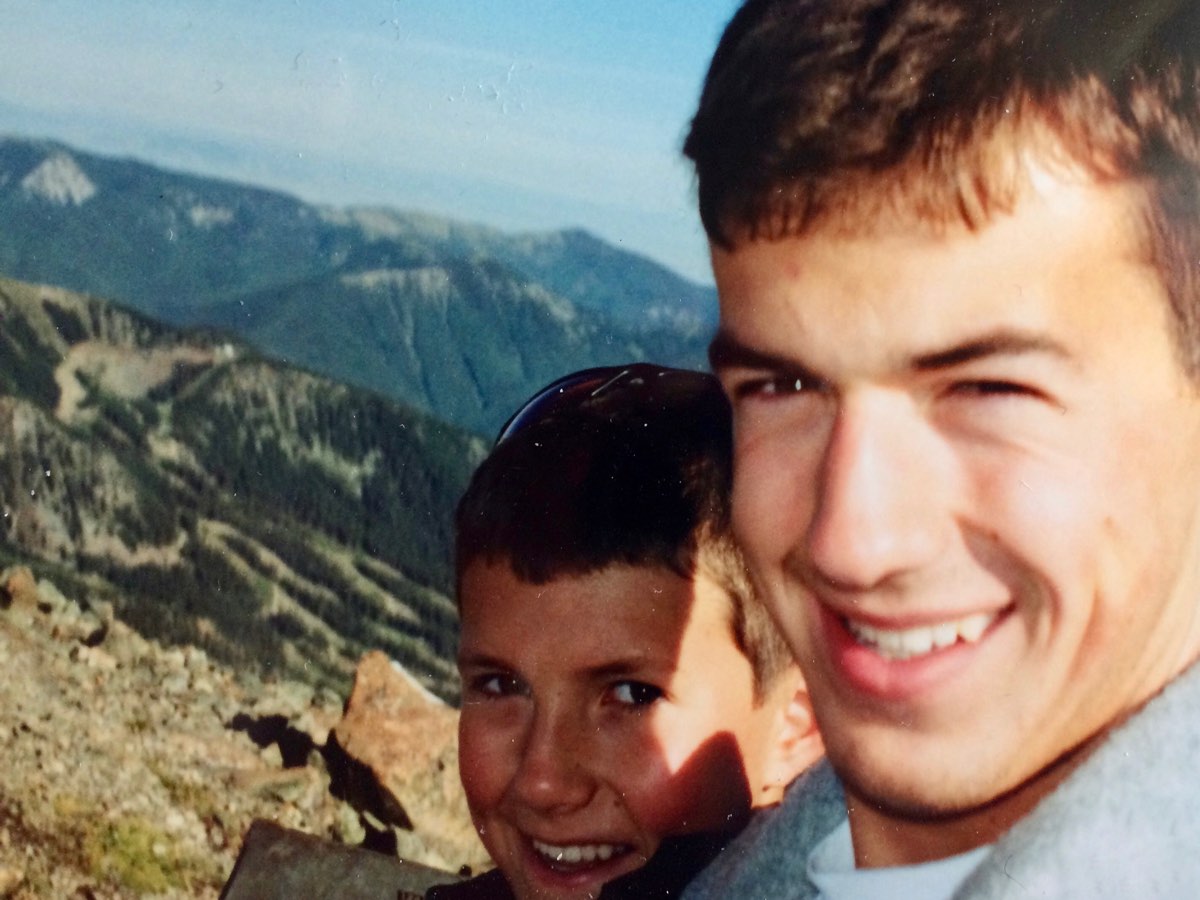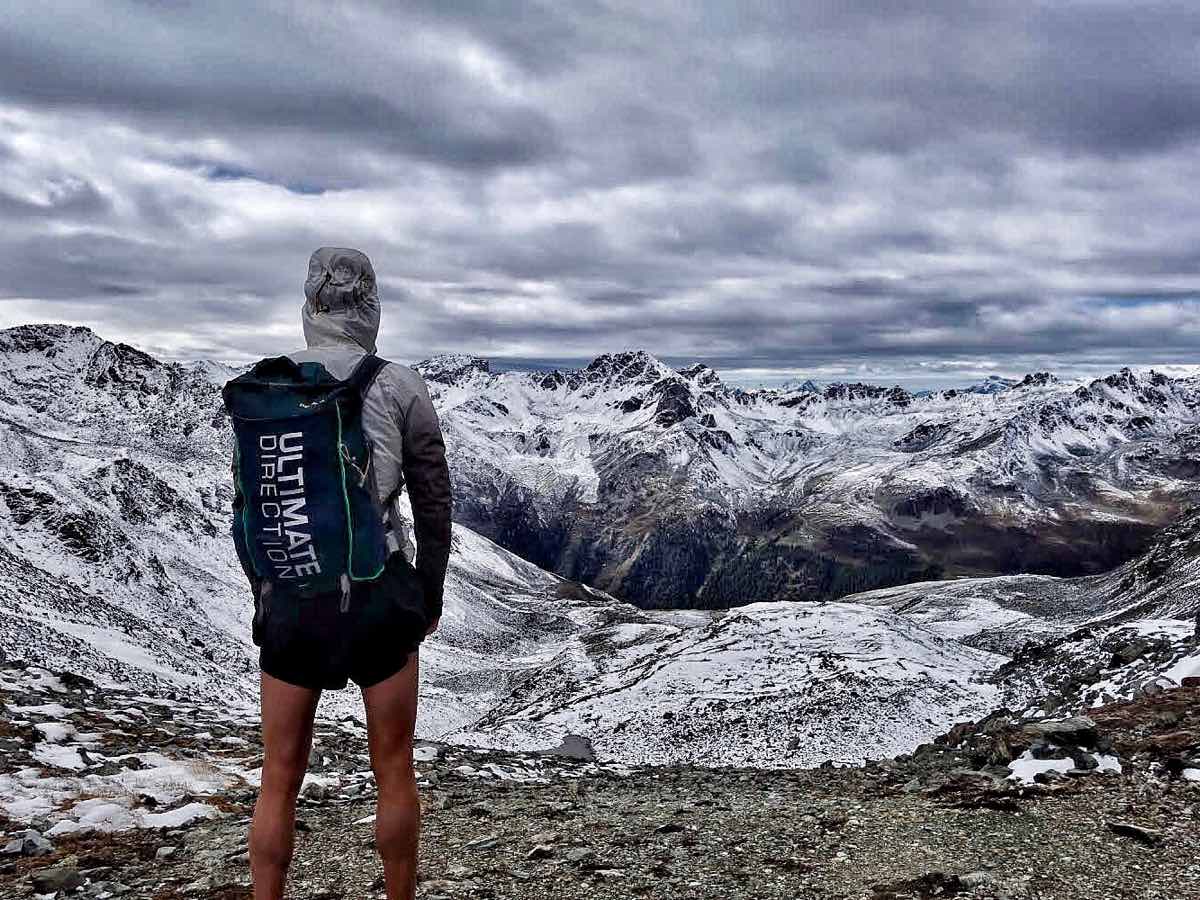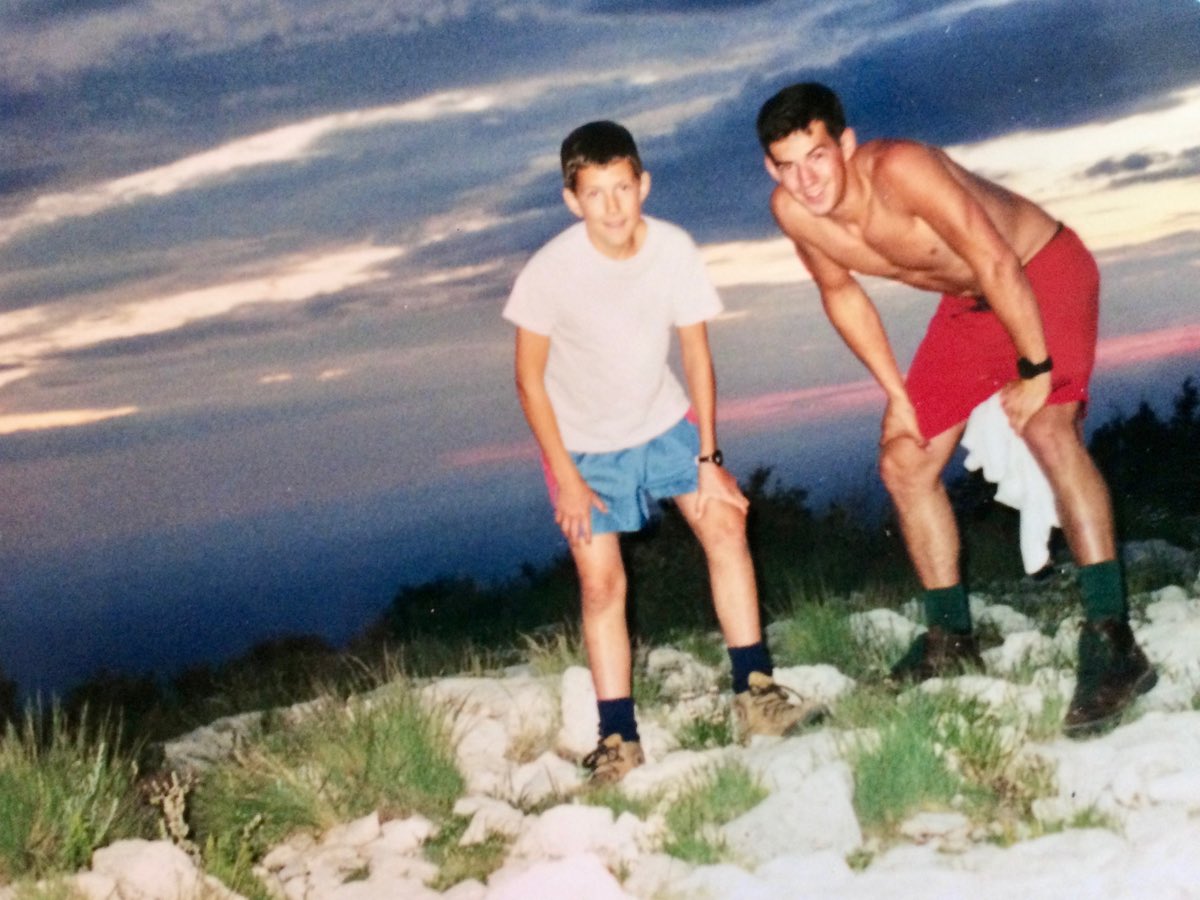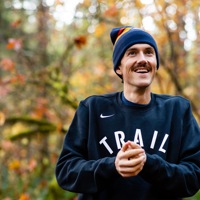In 2001 and as an almost-teenager, I flew to Corpus Christi, Texas where my brother was stationed in the Navy. He and I then spent the next two weeks driving to and running up the high points of seven different states. We climbed to the tops of Texas (Guadalupe Peak, 8,749 feet), New Mexico (Wheeler Peak, 13,161 feet), Kansas (Mount Sunflower, 4,039 feet), Oklahoma (Black Mesa, 4,973 feet), Nebraska (Panorama Point, 5,429 feet), Colorado (Mount Elbert, 14,433 feet), and South Dakota (Black Elk Peak, 7,242 feet).
Logically the whole trip made little sense. Why zigzag across the United States, logging a huge number of miles on the road and foot in a short period of time? Why drive halfway across Kansas and through farm fields only to get lost, wake up surrounded by a herd of cattle, and realize you slept on the ‘summit’ of Kansas’s highest peak? Sure, our plan was a bit illogical, but luckily for us logic doesn’t always factor into a good adventure, while getting off the beaten path usually does.
For those two weeks, we slept in the truck, ate tuna out of a can, rinsed off in creeks, ignored rattlesnake-warning signs in Oklahoma, and made motorcycle friends in Sturgis, South Dakota. We saw a part of the American West that one can’t see in a book, on the internet, or even from the interstate highways. And this period of time was so informative for the rest of my life.
The word ‘adventure’ gets thrown around pretty easily these days. It’s plastered on t-shirts, coffee mugs, and bumper stickers. We are clearly hungry for a sense of adventure, but finding it is easier said (or slapped on your bumper) than done. We think we are too busy, too poor, or too tired. It might feel easier to experience adventure on Netflix or via the #adventure hashtag on Instagram.
Maybe you’re thinking, Even if I had the time, money, or energy to get out and do something wild, I wouldn’t know where to start. I’m new to this whole trail running thing. Yeah, I may have a few extra years of running than you, and while I think it is amazing that Alex Borsuk and Kaytlyn Gerbin did the Infinity Loop at Mount Rainier or that Tommy Caldwell and Kevin Jorgeson spent 19 days climbing the Dawn Wall in Yosemite National Park, that stuff is way over my head, too. You have come to the right place! This is the Trail Running 101 series, and this article is your trailhead to running as a means to adventure.

The author (left) and his older brother on Wheeler Peak in New Mexico. All photos courtesy of David Laney.
The Why: Why Go on an Adventure?
‘Why’ is always a mildly annoying question to me. “Why run?” We have all been asked that 100 or more times. “Why do things that are hard?” We are asked that too. I’ve used thousands of answers, such as “Because it’s what I’ve always done,” “Because it feels good to be in pain,” and “I like blisters.” One reason is that a trail running adventure (and perhaps more specifically the uncertainty, discomfort, and joy that all come as part of it) mold runners into the people we want to be.
If you are here, reading this article about running, then you probably like learning and you probably want to learn about yourself and/or the natural world. Adventure is a great teacher, and trail running is a great means to adventure.
So why is running specifically an excellent means to adventure? First off, it allows one to cover ground much faster than walking. This should allow you to get farther from your comfort zone and see more. Second, running can be uncomfortable, and discomfort allows you to break yourself down so that you can build yourself back up even better. Additionally, trail running is fairly cheap compared to many other outdoor sports. You don’t need a ton of gear, and you don’t need to upgrade your gear every time you advance as an athlete. All it takes is a pair of good trail running shoes and a small running pack for a first adventure out.
Here Be Dragons: What Limits Our Adventure?
What really are the components of a good adventure? What is the purpose? What should be the outcome? Examine any fairy tale, myth, or epic. A flawed warrior ventures into the unknown, overcomes a physical and mental trial, and slays a dragon. In the process, they become a better warrior, returning to their tribe wiser, compassionate, humble, and more content.
Dragons of the 21st century real world are easier to find than you may expect. They hide inside our brains, hearts, smartphones, and relationships. But we all know that our dragons can be ‘battled’ with the discomfort, uncertainty, and, let’s be honest, the fresh air that comes on a good adventure. Today’s polite society tends to frown upon self-imposed discomfort, calling it masochism. (Though as an iRunFar reader, I’d venture to guess you may not consider yourself a part of polite society!) English historian Edward Gibbon states, “We improve ourselves by victories over ourselves. There must be contest, and we must win.”
The short of what I am trying to say is that, though we may perceive limitations to our time or ability, there are realistically very few things which limit our ability for a good adventure. The dragons we are talking about then, are our inability to use our imaginations and dream. So in the contest with oneself, put to sleep any naysayer inside you and awaken the dreamer!
How To Create an Adventure
First off, don’t let someone else define your adventure for you. It should be for you, not your Facebook friends, Instagram followers, or water-cooler workmates. Pick something that you think is cool. That could be signing up for your first trail half marathon, doing an overnight backpacking trip, or signing up for a guided trail running trip. It could also be climbing a mountain, running a long-distance relay race, or volunteer coaching a high-school cross-country team. Or, get this, your adventure doesn’t have to be related to running at all! Imagine going on a rafting trip or taking an orienteering class. Let yourself brainstorm big!
Once you have a couple ideas swirling in your imagination, it’s time to buckle down and look at the tangible resources you have available to devote to your dream. How much time and money you have? What are your current fitness and experience levels? Do you have mentors or friends who can join or assist you?
It’s at this place, where intangible dreams and tangible resources meet, that an adventure comes to be. Let’s examine some of the tangible details a little more.
Take Someone with You.
When you are newer to a sport or hobby, it helps to have mentors and friends who can show you the ropes and make sure you don’t bite off more than you can chew. This keeps everyone safer and often makes for a better time. Think of a seasoned adventurer you look up to, and consider that they once were new to the uncertainty of the outdoors and were mentored, learning from those who came before them. We learn from our own experiences but also the experiences that have been passed down for centuries.
Wake Up Early!
The early morning is magical. You get to see the world at an hour humans rarely see. Brew your coffee under the light of a headlamp and get going! You won’t regret it.
Do Something Hard.
An adventure can be challenging. It can allow you to see sides of yourself rarely seen in normal life. Pushing yourself a bit allows you to see that unknown side of you. But in doing something hard, be safe, smart, and act within your boundaries. Getting outside your comfort zone is good, but doing things that are unsafe is not.
Do Something Beautiful.
Maybe doing something that inspires you is more important to you than doing something hard. If so, that’s cool too. Remember, pick an adventure that’s right for you. You know that lake that’s only four miles up the trail that you run past sometimes? It’s not far or hard to get to, but it’s clear and blue and you’ve always wanted to spend more time there. What about an overnight backpacking trip to do exactly that?
Be Prepared.
When pushing your limits and experiencing some uncertainty, things can still go wrong. When something goes wrong and you are near your limit, it will likely have a much bigger effect. Be prepared by having foresight for issues that might arise. Pack food, water, warm clothes, have a map, understand the basics of navigation in the area you’re in, tell others where you are going, and have a back-up plan in the event of bad weather or injury. Slaying a dragon is great, but getting home safe is even greater.
Consider an Adventure That Starts at Home
You don’t have to fly halfway around the world to have an epic experience! Adventure can start at your front door. Last year, runner Rickey Gates ran every single street in his current residence of San Francisco, California. Sure, it was a big adventure that lasted a lot of days because San Francisco is a massive city, but he didn’t have to go anywhere to do it.
Adventure can be born on your couch. Reading exploration tales is one of the ways ideas can be inspired, and planning can begin. Below are a few of my favorite books that inspire my adventurous side, curiosity, and endurance.
- Endurance: Shackleton’s Incredible Voyage by Alfred Lansing
- Never Cry Wolf by Farley Mowat
- The Oregon Trail: A New American Journey by Rinker Buck
- Eiger Dreams: Ventures Among Men and Mountains by Jon Krakauer
Failure is an Adventure
Adventure without failure is like pie without ice cream. Don’t get discouraged if you don’t make it on your first attempt! Anyone who has done anything uncomfortable, uncertain, or outside their comfort zone has been turned back or had to deviate from their goal. I’ve turned back or rerouted more times than I’ve had an adventure go the way I had planned. This is not failure; this is inherent to the adventure itself. Keep yourself safe. Overcome, but don’t be overcome. The summit will always be there, and it’s your job to make sure you are, too. Honestly, if it goes as planned, is it really an adventure at all?

The author about to stop his Haute Route fastpacking trip in the European Alps early as a result of too much snow. Not a failure!
Last Adventure Thoughts
One of the greatest joys of life is that the seeds of adventure tend to grow quickly. The road trip my brother and I went on 18 years ago could have been just that, a road trip. We could have done it in 48 hours, slept in motels, and eaten at McDonalds. But that is boring! Life is to be learned, and the best way to do that is by getting off the beaten path.
Without the seed of adventure being planted on that trip, I probably wouldn’t be writing this now. I started this trip as a 12-year-old kid with little taste for uncertainty, self-improvement, tuna, or rattlesnakes. I finished the trip a fledgling dirtbagger with a new hunger for adventure and a love for at least three of these things. The same can be true for you. Grow your good qualities and starve your flaws. Once you get the ball rolling, adventure grows like a weed.
Call for Comments (from Meghan)
- What are your favorite books or readings about adventure?
- What formative experiences taught you to enjoy and seek adventure?
- Do you have kids with whom you share adventures? Can you share a story about the seeds of adventure being planted in your children?


